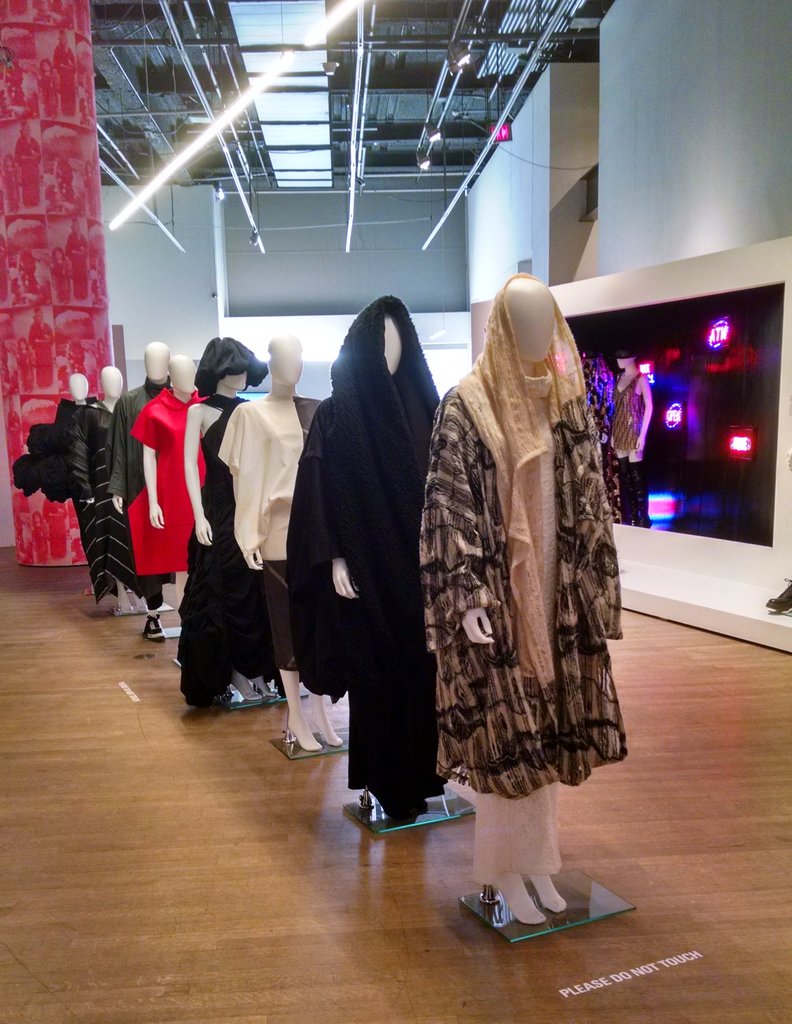Politics of Fashion | Fashion of Politicsat the Design Exchange is an obvious treat for fashion lovers, the show also offers a great deal for art lovers too to mull over.
Guest curated by the legendary Canadian fashion generalist, Jeanne Beker, and DX curator Sara Nickleson, Politics of Fashion | Fashion of Politics examines the increasingly communicative role of fashion in a modern society where politics, art and fashion interact with fervour. The curatorial statement emphasises fashion as a vehicle for social change, a platform for ideological assertions, and the act of dressing as a means for the expression of communal values. Fashion’s evolving treatment of themes including consumerism, activism, gender, sexuality, ethics, and power are documented here in this show.
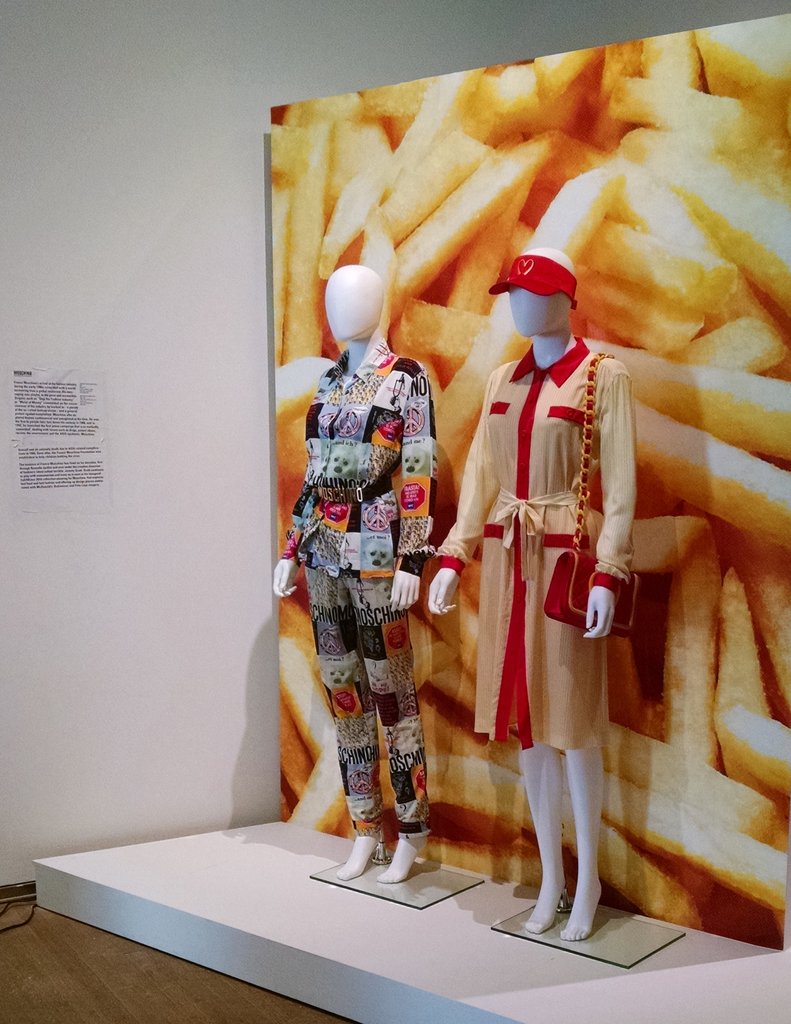 Moschino, “McDonalds Dress, 2014”. From the collection of Moschino.
Moschino, “McDonalds Dress, 2014”. From the collection of Moschino.
There is feminist art from FEMEN Quebec, Nick Knight addresses race on the runways in a short fashion film, and the English Mod and Skinhead subcultures are examined. Hybrid pieces from Rad Hourani’s gender neutral line sheds gendered clothing traditions with designs rich in geometric shapes, solid colors, and strong, clear lines. Samples from Vivienne Westwood’s post-apocalyptic collection predict fashion in a future where climate change and environmental degradation continues. Outfits feature gasmasks, bleak colours, repurposed material and scraps, army surplus, and unfinished and jagged hems.
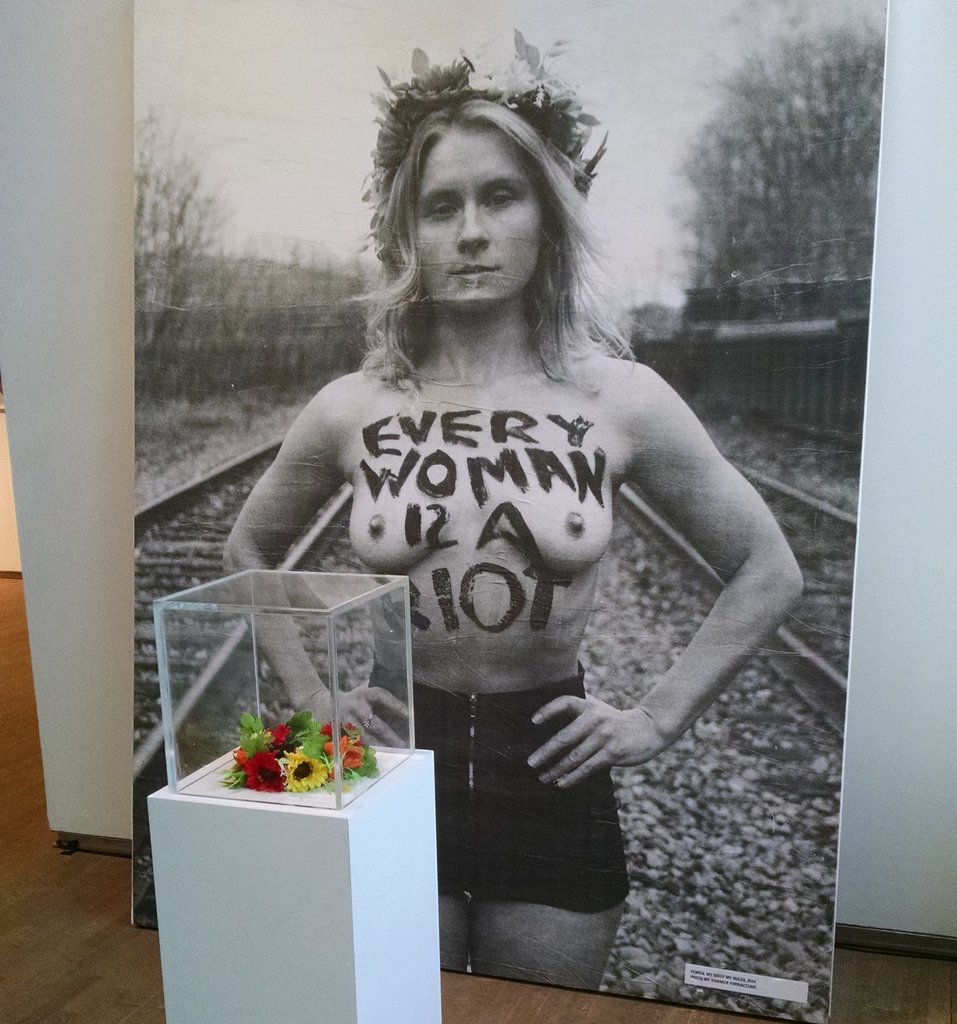 FEMEN, “Crown”, 2013. FEMEN Quebec. From the collection of FEMEN Quebec.
FEMEN, “Crown”, 2013. FEMEN Quebec. From the collection of FEMEN Quebec.
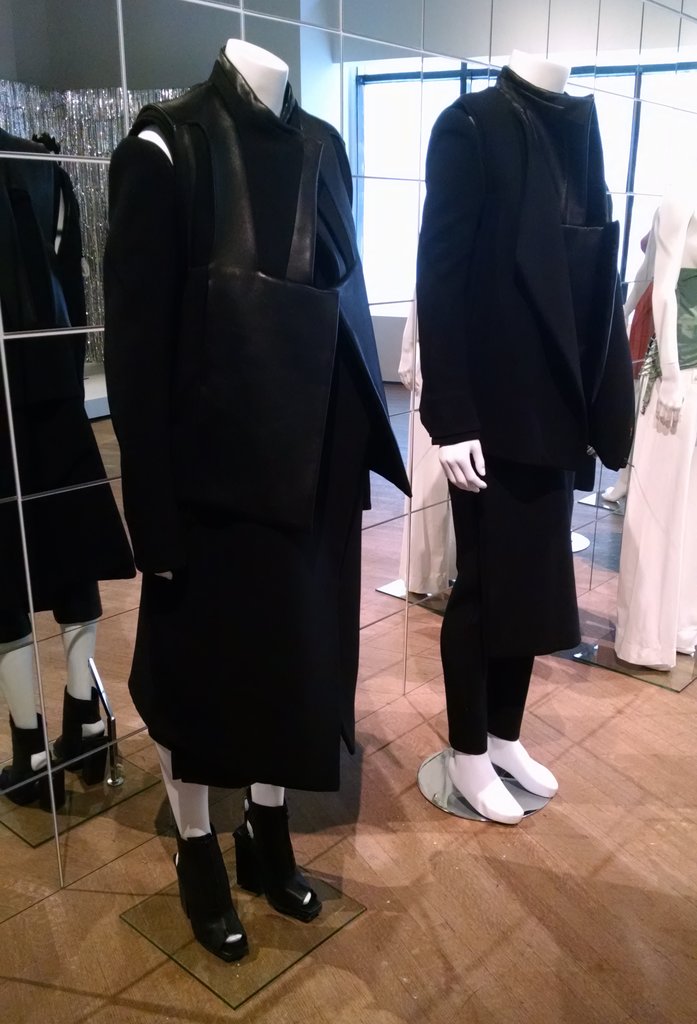 Rad Hourani, “Looks from Collection #12”. From the collection of Rad Hourani.
Rad Hourani, “Looks from Collection #12”. From the collection of Rad Hourani.
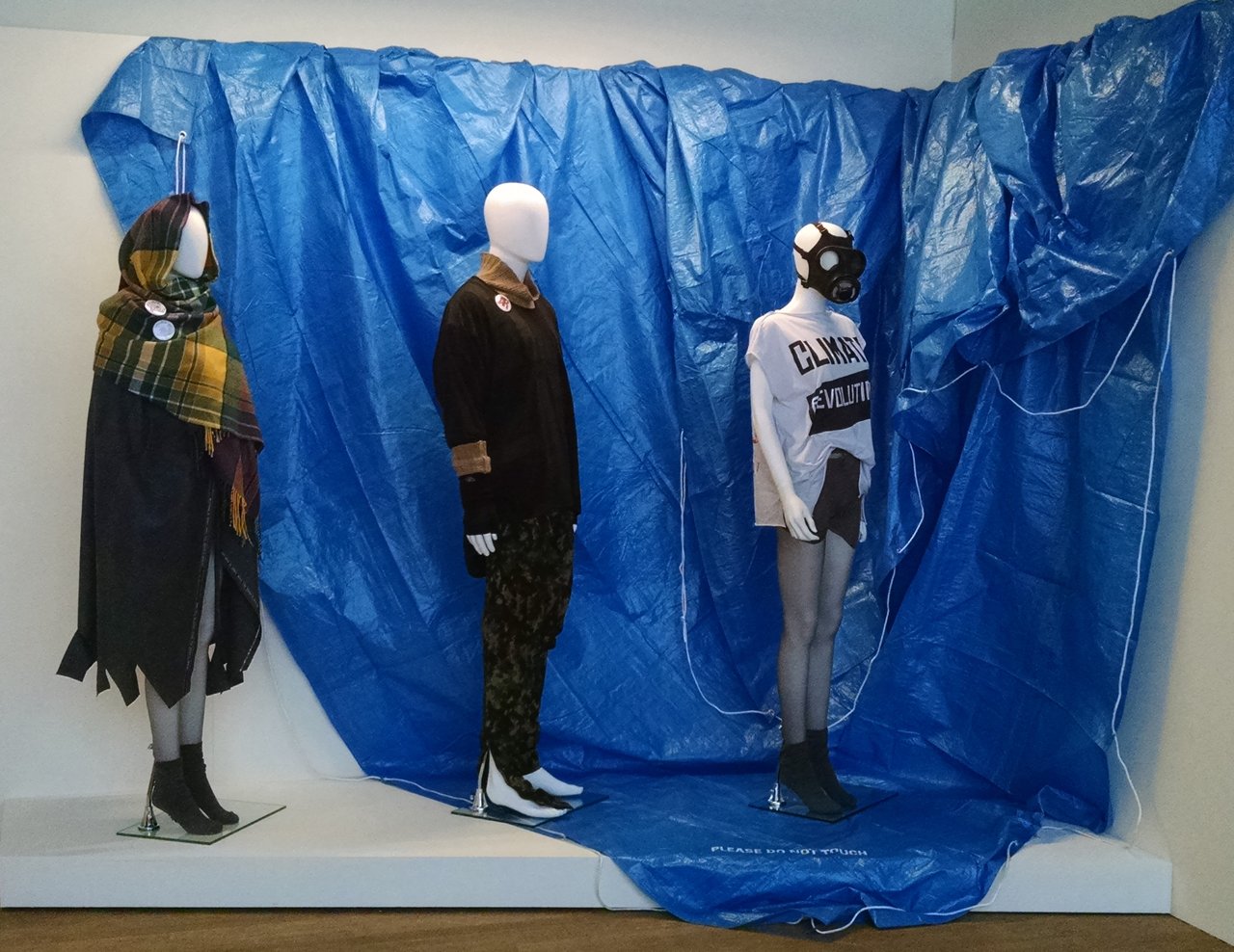 Vivienne Westwood, “Climate Revolution Cape”, 2013. . From the collection of Pearl Westwood.
Vivienne Westwood, “Climate Revolution Cape”, 2013. . From the collection of Pearl Westwood.
A highlight was the collection of vintage paper dresses on display. These A-line minis reek of the 1960s; they are boldly patterned or else they are vibrantly coloured in addition to being incredibly short! The dresses feature popular political figures of the era such as Pierre Trudeau and Richard Nixon.
A product of the media-image loving post-war consumer society of 1960s America, disposable paper dress fashion embodied ideologies of consumption, mass-production, and commercialism. Scott’s “Paper Caper” dress pitch ran: “Won’t last forever…who cares? Wear it for kicks—then give it the air.” Wearers displayed overt support of specific politicians, but more importantly, alliance with popular consumerist ideologies.
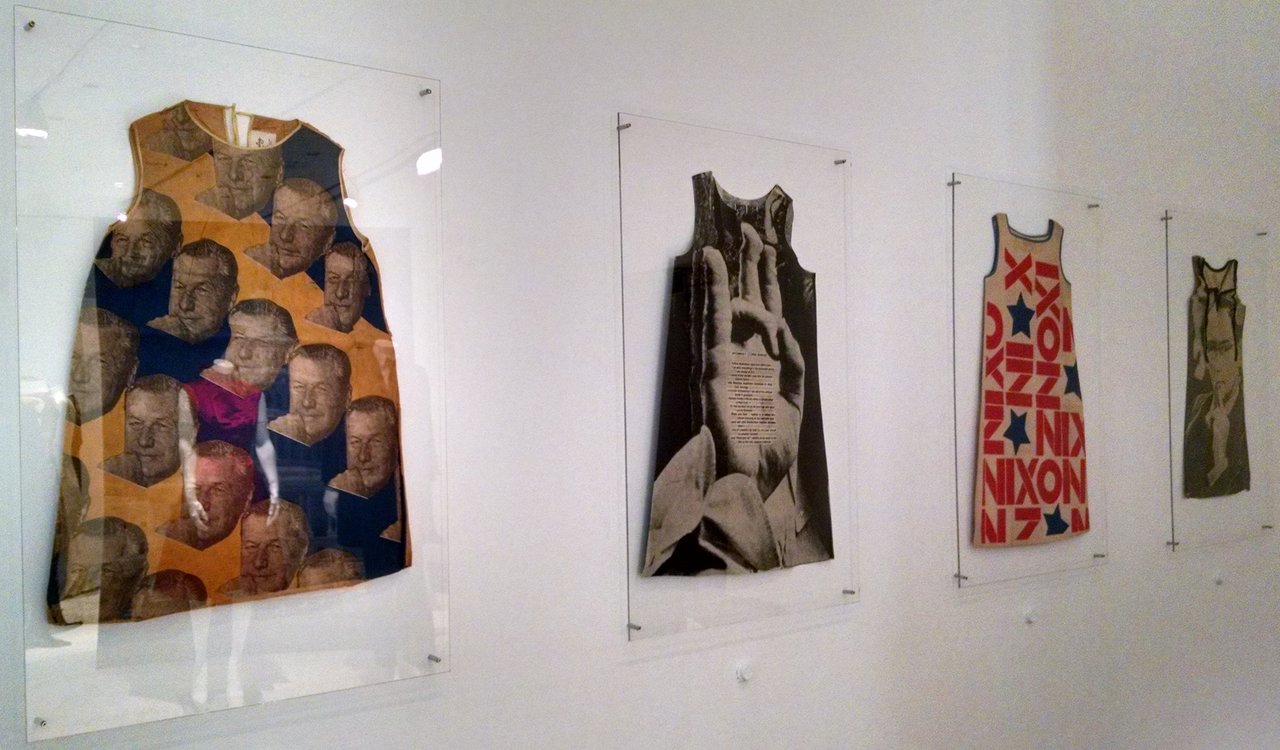 From left to right: Dress 1, 2, 3: Paper dresses created for the Republican Party National Convention. 1968. Printed and bonded cellulose fibre, Dress 4: Paper dress created for the Liberal Party Leadership Convention. 1968. Printed and bonded cellulose fibre. Collection of the Fashion History Museum.
From left to right: Dress 1, 2, 3: Paper dresses created for the Republican Party National Convention. 1968. Printed and bonded cellulose fibre, Dress 4: Paper dress created for the Liberal Party Leadership Convention. 1968. Printed and bonded cellulose fibre. Collection of the Fashion History Museum.
Like the pop-art that erupted during the same era, these paper dresses were for the masses. They are a form of pop-art in and of themselves, incorporating representational campaign images from the media and functioning as wearable advertisements. These paper dresses mark an overt merger and interaction between popular fashion, art, and politics.
Text and photo: Emily Kovacs
*Exhibition information: September 18, 2014 – January 25, 2015, Design Exchange, 234 Bay Street, Toronto. Gallery hours: Mon & Wed-Sun: 11 – 6 p.m., Tue: 11 – 9 p.m.

